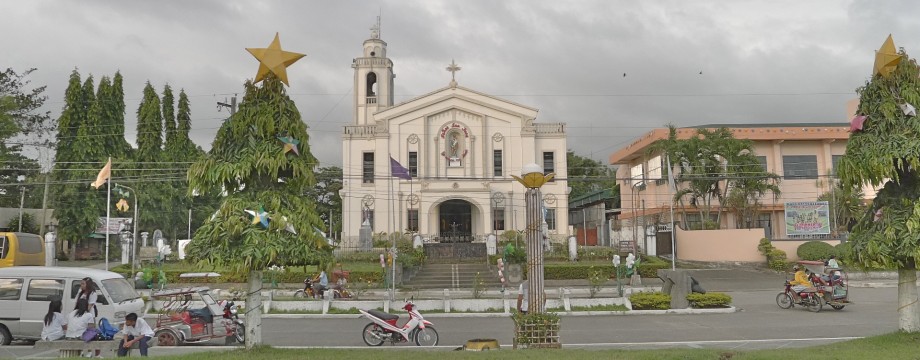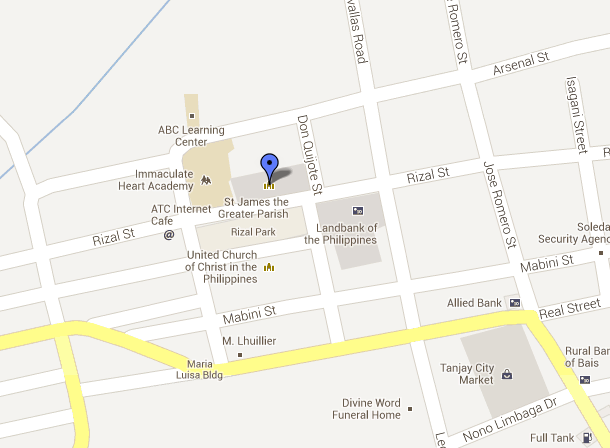The Silliman University Church:
About the Church:
The beginnings of S.U. Church date back to the coming of the American Presbyterian missionaries to the Philippines in 1899. Two years later, they established the Dumaguete Mission Station in January of 1901. Seven months later, Dr. & Mrs. David & Laura Hibbard founded Silliman Institute.
At the start, the regular services were organized together with the first classes. An unorganized evangelical congregation in Silliman apparently existed as early as 1903 but the plan to have a church organized materialized only upon the establishment of the Presbyterian Church of Dumaguete on December 6, 1911. This church, which later would become known as the Dumaguete Evangelical Church, was composed of both the Dumaguete townspeople and the Silliman Community. This event marked the official founding of the present Silliman University Church.
However, because of the difficulty of maintaining under one structure two congregations which had different intellectual interests and using different languages for worship, the two groups eventually were reorganized as separate congregations in 1916 with Dr. Paul Doltz serving as the first Pastor of the Silliman Student Church.
Since its founding, Silliman Church had always had the student as its central concern. Its program had been a very active one putting emphasis on its evangelistic witness. Yet despite its Presbyterian background, the students were given the freedom to practice their own religious beliefs and were instead provided with opportunities to broaden their spiritual horizon and translate their faith into active commitments.
The first forty years saw a tremendous growth of the Church in terms of its programs and membership. Religious organizations were soon organized for the students and members of the congregation. It was through these organizations that the Church was able to effectively serve the spiritual needs of the students and where the students, in turn, were able to exemplify and put into practice their faith and share their Christian experiences.
Although attendance to the services at the start was compulsory, it could not be denied that the membership of the church increased significantly. In 1940, attendance in the Sunday services at the Silliman Hall averaged more than six hundred. In 1941, an estimate of 50 teachers, 250 students took responsible parts in the church program. From an unorganized church, the fellowship had developed into a unique parish in an academic setting with a permanent core of students, faculty and staff as members.
The increase in church attendance saw the need for the construction of a new church building with the old Silliman Hall having been outgrown. With the help of local friends and those abroad, the dream of having a new building began to materialize on Founder’s Day 1941 when the cornerstone was finally laid.
It was hoped for the construction to be finished in time for the commencement in 1942. However, less than 4 months after the laying of the church’s foundation, the war in Europe was brought to the Pacific after the Japanese sneak attack on Pearl Harbor. In less than 24 hours, enemy planes began to bomb the Philippines. The war caught the church building unfinished with only the walls and roof in place.
The eventual Japanese occupation of Dumaguete saw most of the Silliman community evacuating in the mountains of Negros. For almost 4 years they lived the life of a ‘bukidnon’ enduring all the inconveniences brought about by the times. Yet despite all the challenges they faced, the faith of the Christian community never faltered. Regular Sunday services and daily devotions were continued to held. Throughout the duration of the war the church never really ceased to function. There were no solid organizations, no solid structures but amidst the damp and rugged terrains of the jungle and the continued threats of war – the fellowship went on.
The end of the war saw the beginning of a new life for the Church. The new building miraculously survived the war and was finally completed in December 1949. The first service was held on the eve of the New Year.
After the war, the regular services and programs were revived and broadened. The Church extended its concern to those outside its congregation. Outreach programs were initiated on campus, in Dumaguete, the surrounding municipalities, and even as far south as Cotabato. The Church catered not only to the spiritual but also to the physical, intellectual and socio-economic needs of people whom most of the congregation did not even know or have ever seen. All these programs and activities would prove that Silliman University Church was not only a Sunday to Sunday worshipping congregation and that its ministry was not confined within the walls of the sanctuary.
In the 1960’s, The Church played a vital role in establishing new relations with the Catholics. Through the efforts of Dr. Paul T. Lauby, President Cicero Calderon, and other members of the Silliman Community, the first ecumenical service/rally in the Philippines was held fostering a warmer Protestant-Catholic relation.
Perhaps an important event that affected the Church in the 70s was the proclamation of martial law in 1972. The closure of the University that followed the proclamation resulted in the significant decrease in church attendance. Yet despite the prevailing tense atmosphere under military rule, the fellowship of the Church continued along with the regular services.
Since its founding, the Silliman Church has always had the students as its central concern. Standing high for all to see is the cross proclaiming that there is a great educational institution built on and loyal to the teachings of Jesus Christ. Its doors are always open to anyone anytime for corporate worship, for those who seek inner peace in silent conversation with God, or those who simply seek the solemnity of its sanctuary.
Silliman Church is open to all who seek to regard God in Christ. The Church staffs are ever-willing and ready to consider with the students, faculty and staff or any person for that matter, the God upon their life. The Church continues to extend to those who are not members a warm welcome to its worship study, and other meetings that through them the Church may share a true Christian experience.
Today, the Church is still alive as ever. Her members come and go but she remains. She is the heart and soul of the Silliman community.
Through the years Silliman University Church has grown but not without trials and challenges. But through it all the Church has weathered all the storms standing true to the claim that, indeed, “THE FOUNDATION OF GOD STANDETH SURE”






































































